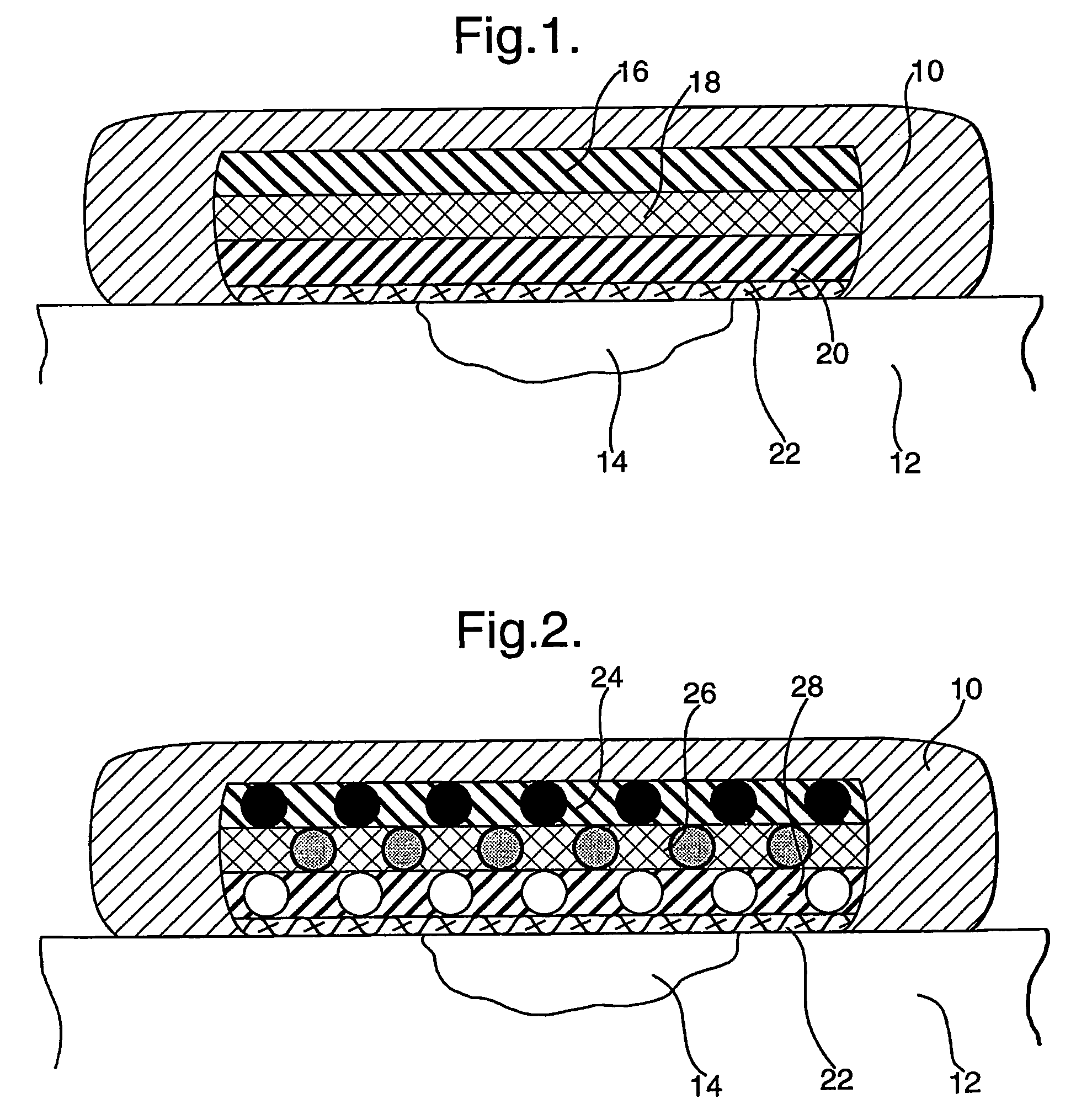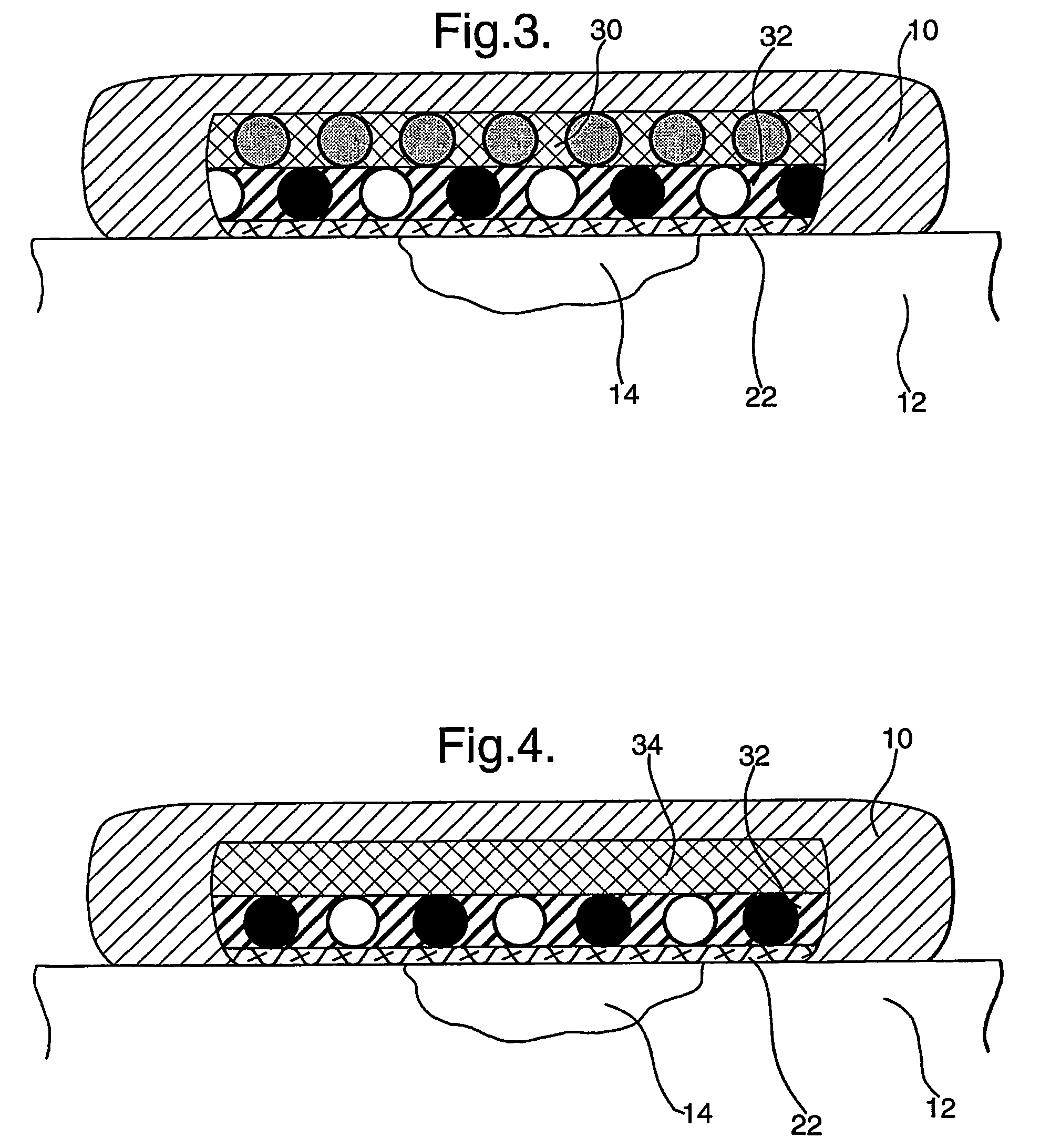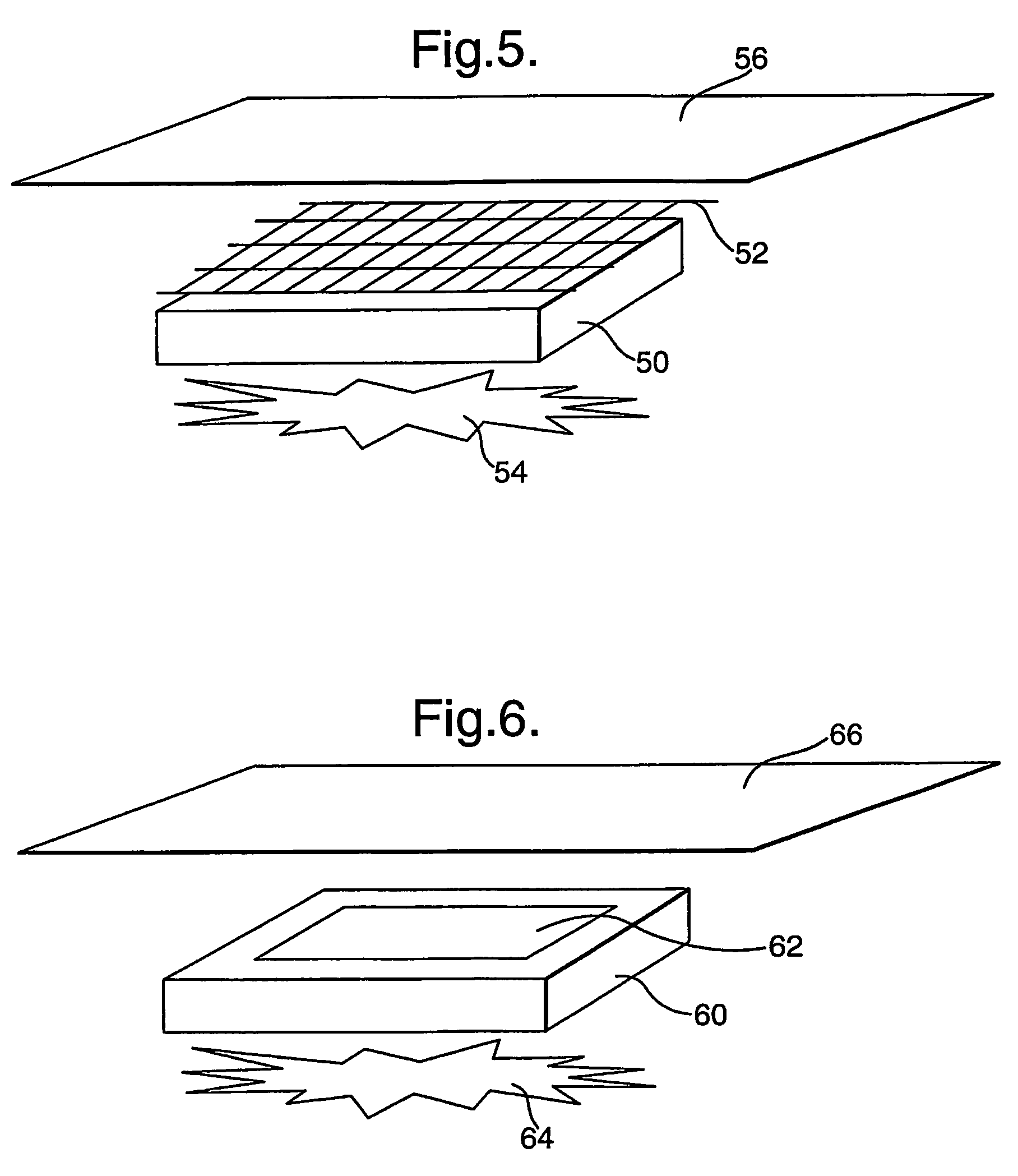Wound dressings comprising hydrated hydrogels and enzymes
a technology of enzymes and hydrogels, applied in the field of wound dressings, can solve the problems of preventing enzyme functioning and antimicrobial effects, and achieve the effects of preventing undesired material migration, preventing undesired migration of enzymes into wounds, and being convenient to apply
- Summary
- Abstract
- Description
- Claims
- Application Information
AI Technical Summary
Benefits of technology
Problems solved by technology
Method used
Image
Examples
example 1
[0094]Using standard practices, a 1.5% agarose microbial growth plate is prepared, but with the glucose replaced by fructose as the sole carbon source. The plates are typically in the region of 5 mm thick. Pseudomonas aeruginosa was spread over the surface of the plate in an even “lawn”. A pad containing LPO-alginate prepared as described immediately above) of approximately 20 mm2 was placed onto the surface of the plate. Placed directly onto this pad is a 20 mm2 pad containing glucose-agar (prepared as described immediately above) (with or without KI). Finally, a 20 mm2 pad containing GOX-alginate (prepared as described immediately above) was layered onto the glucose-agar pad. A clearance zone around the pad stack can be clearly seen after 24 hours, showing the production and diffusion of active anti-microbial species, preventing the growth of the applied bacteria. Removal of any one of the 3 pads (control experiments) results in no clearance zone around the pad stack, showing that...
example 2
[0095]Alternatively, to show the production of reactive oxidative species via the stacked enzyme system, a 1% w / v agar plate is cast, that includes 1% soluble starch (e.g. ARCOS cat. no.: 177132500) and 10 mM KI. The plate is allowed to set by cooling. The LPO-alginate pad, followed by the glucose-agar pad and finally the GOX-alginate pad can then be stacked as described above in Example 1. The production of the reactive oxidative species can be then visualised by the intense blue coloured chromogen produced by the well documented interaction of elemental iodine (the oxidative species oxidise the iodide to iodine) and starch. This coloration can be clearly seen after 5 minutes, with the intensity and spread building over time. After 30 minutes, the colour intensity has built to become a deep blue, indicating continued product formation. This shows that both reactive oxidative species and iodine are produced, both of which aid in the anti-microbial activity of the composite dressing....
example 3
[0096]A variation on Example 2 is to include a low level of GOX (0.25 μg / ml) in the LPO-alginate pad, to promote an initial production of reactive oxidative species. This utilises oxygen available in the gel, and is initiated by the glucose that is diffusing into the LPO-alginate pad. This reaction is limited, due to the availability of oxygen and will cease when the oxygen is depleted. To show the production of reactive oxidative species via the stacked enzyme system, a 1% w / v agar plate is cast, that includes 1% soluble starch (e.g. ARCOS cat. no.: 177132500) and 10 mM KI. The plate is allowed to set by cooling. The combined LPO and GOX-alginate pad, followed by the glucose-agar pad and finally the GOX-alginate pad can the be stacked as described above. The accelerated production of the reactive oxidative species can be then visualised by the intense blue coloured chromogen produced by the well documented interaction of elemental iodine (the oxidative species oxidize the iodide to...
PUM
| Property | Measurement | Unit |
|---|---|---|
| molecular weight | aaaaa | aaaaa |
| molecular weight | aaaaa | aaaaa |
| diameter | aaaaa | aaaaa |
Abstract
Description
Claims
Application Information
 Login to View More
Login to View More - R&D
- Intellectual Property
- Life Sciences
- Materials
- Tech Scout
- Unparalleled Data Quality
- Higher Quality Content
- 60% Fewer Hallucinations
Browse by: Latest US Patents, China's latest patents, Technical Efficacy Thesaurus, Application Domain, Technology Topic, Popular Technical Reports.
© 2025 PatSnap. All rights reserved.Legal|Privacy policy|Modern Slavery Act Transparency Statement|Sitemap|About US| Contact US: help@patsnap.com



